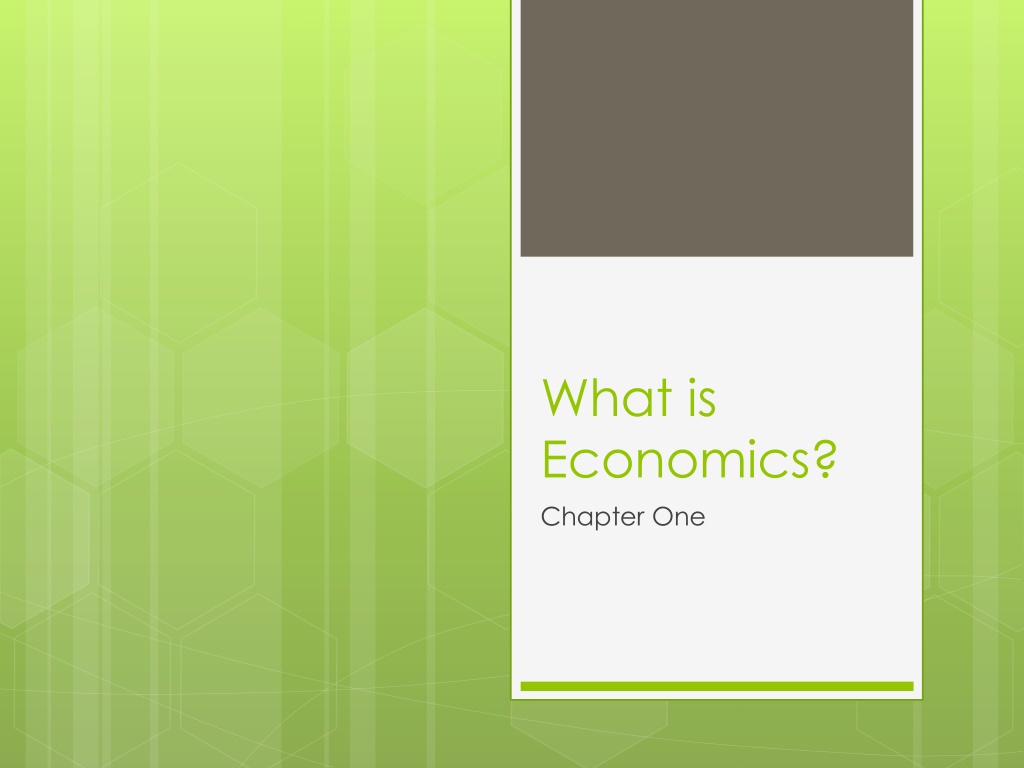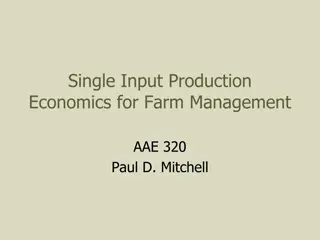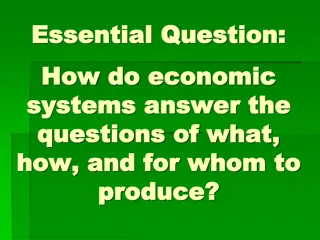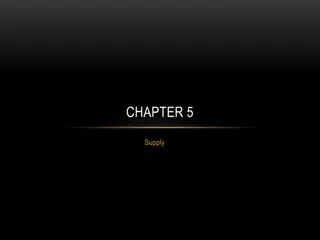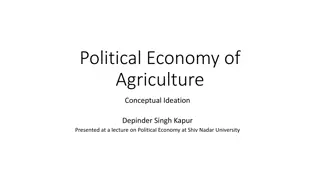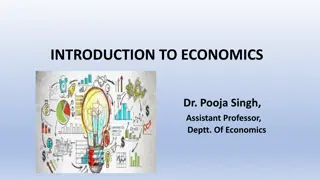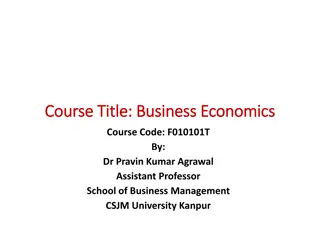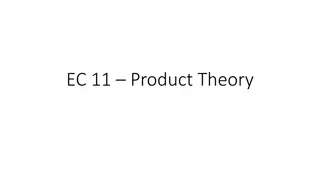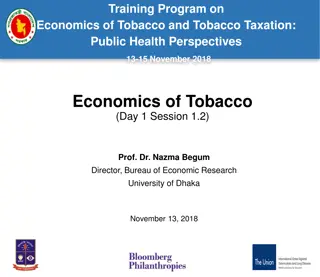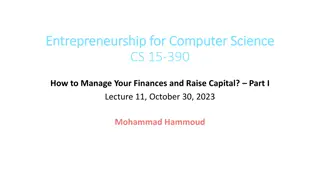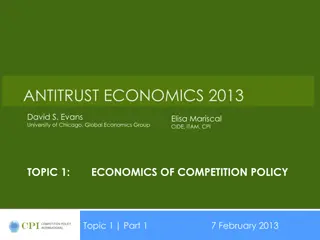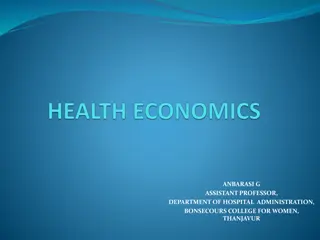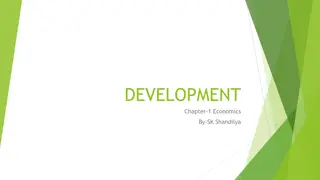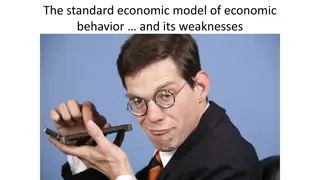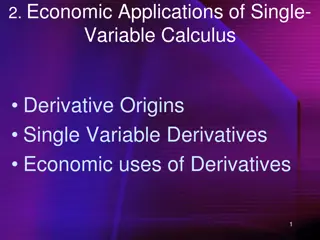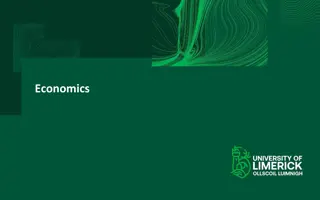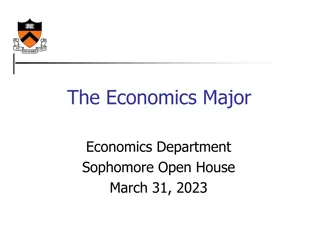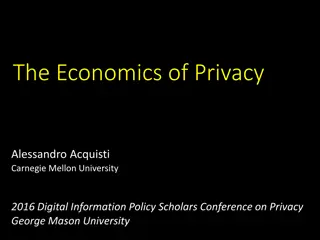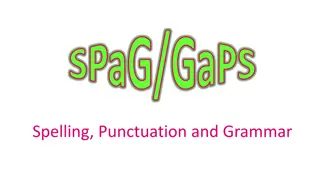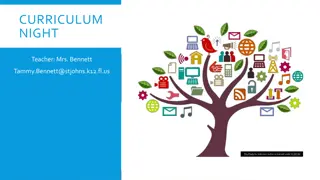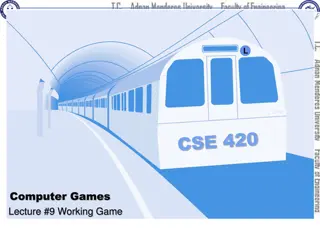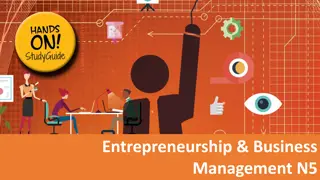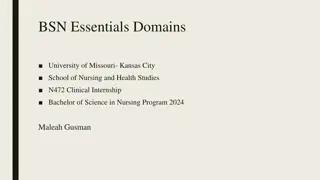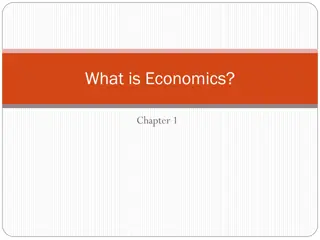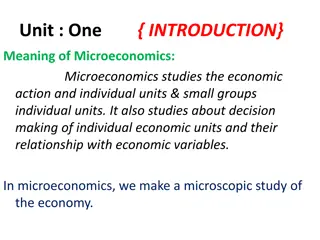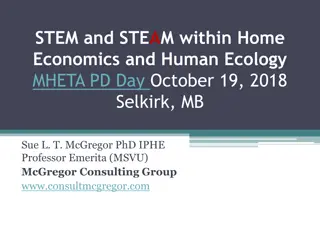Understanding Economics: Basics and Essentials
Delve into the fundamental concepts of economics with an exploration of scarcity, factors of production, and the impact of limited resources on daily life. Discover the significance of TINSTAAFL (There Is No Such Thing As A Free Lunch) and learn how society grapples with the inherent problem of scarcity. Uncover the role of resources like land, labor, capital, and entrepreneurship in the production of goods and services. Enhance your understanding of economic principles through practical examples and thought-provoking questions.
Download Presentation

Please find below an Image/Link to download the presentation.
The content on the website is provided AS IS for your information and personal use only. It may not be sold, licensed, or shared on other websites without obtaining consent from the author. Download presentation by click this link. If you encounter any issues during the download, it is possible that the publisher has removed the file from their server.
E N D
Presentation Transcript
What is Economics? Chapter One
TINSTAAFL What do these letters stand for? THERE IS NO SUCH THING AS A FREE LUNCH The more a business gives away for FREE it must make up for by charging higher prices for other items
Free? Think of an example of a supposedly free item that you see everyday. Explain why the item is not really free by stating who or what actually pays for it.
Answer the question If you could make a small change in your daily routine that would save you time and money, would you make the change? Why or why not? Define Scarcity
Scarcity the fundamental economic problem the condition that arises because society does not have enough resources to produce all the things people would like to have. SCARCITY Is scarcity caused by a shortage of money??
Warm Up #11 - Scarcity How does scarcity affect your life? Provide several examples of items you have had to do without because limited resources could not keep up with your wants.
4 Factors of Production Resources used in the production of goods and services 1. Land 2. Labor 3. Capital 4. Entrepreneurship
LAND gift of nature or natural resources Resources no created by human effort Limited in supply
CAPTIAL Tools, equipment and factories used in production Financial capital- money used to buy tools and equipment for production
LABOR People with all their efforts, abilities, and skills. All people involved in production except entrepreneurs (owners) The amount of this resource can vary over time
ENTREPRENEURSHIP Entrepreneur: a risk-taker in search of profits Driving force in the American economy Their initiatives combine other 3 factors; land, labor and capital
Warm Up #13 9/22/14 Create a product or service You must list one example of each factor of production you will need to create your product or service. Diamond Ring Land: Diamond Capital: diamond cutter/polisher Labor: Gemologist Entrepreneurship: Diamond distributor
Three Basic Questions are used by society to decide how to best use limited resources 1. What To Produce? 2. How To Produce? 3. For Whom to Produce?
WHAT TO PRODUCE?? Should society produce more consumer goods like clothing and food or military equipment like airplanes and submarines? GUNS v. BUTTER Society cannot produce enough for all wants so it must decide
HOW TO PRODUCE?? Most efficient, cost effective way to produce goods/services Assembly line v. less equipment more workers Which is better?
FOR WHOM TO PRODUCE? How will produced items be allocated? Pricing, location and availability usually determine who while receive these items BMW automobile? Low-income housing? Old Navy jeans?
ECONOMICS the study of how a society produces, distributes and consumes its limited resources with unlimited wants. WARM UP #14- 9/23/14 Write a brief description of the American economic system as YOU see it using the concepts of : SCARCITY FACTORS OF PRODUCTION 3 BASIC QUESTIONS.
Trade-offs and Opportunity Costs
Trade-offs Alternative choices when spending your income or time. Alternatives CRITERIA $75 or Less? Durable? Will Parents approve? Can use any time? Several CDs yes yes yes no Concert Tix no no maybe no Soccer Ball yes yes yes no Jeans yes yes yes yes
Opportunity Cost The cost of the next best alternative use of money, time or resources when one choice is made rather than another. Example: based on earlier chart Chose jeans so not enough money left for next best option soccer ball Opportunity cost of jeans was soccer ball
Warm Up #15- 9/24/14 Explain trade-off and opportunity cost in your own words and then give an example.
Create your own Decision Making Grid Must determine 3 alternatives and total amount of money you can spend along with 2 other criteria Alternatives Criteria ?? $___ or less ?? 1. 2. 3. Determine your choice and the opportunity cost of your choice.
Warm Up #16 9/26/14 If the United States was in the midst of a large scale war, how might the government decide to allocate(use) its resources? More consumer goods (butter) or military goods (guns)? Explain your answer.
Production Possibilities Frontier A diagram representing various combinations of goods and/or services an economy can produce when all resources are fully employed. Using the same materials/resources, the company needs to decide how much production should go to boats and trucks.
Trucks v. Boats when all resources are fully used What three points illustrate all resources are fully used? What point shows resources under used? What point shows production greater than resources?
Opportunity Cost? Unfortunately, the company had to layoff workers. Point D represents the less number of workers so the opportunity cost is less workers is 5 less boat per year.
Create your own Production Possibilities Frontier for a textile company that produces jeans and t-shirts. Jeans 100 75 50 25 0 T-Shirts 40 60 70 100 120
Opportunity Cost? What is the opportunity cost of increasing production of 20 more shirts? ( Hint: how many less jeans?)
Explain How opportunity cost is involved when resources are shifted from the production of one good to another. HOMEWORK: In your notebook, create a list of 50 things you find in your home. Please diversify.
Basic Economic Concepts Chapter one Section three
Needs v. Wants Take out list of 50 items from your home and determine which items you NEED and which items are NICE to a have. What is a NEED v. a WANT? Need: basic requirement for survival Want: a means of expressing a need Ex. Food is a need but pizza is a want.
Warm Up #17 9/29/14 Review your Journal and be sure you have correct entries for the following warm-ups #11- Think about a free item that you see everyday. Explain why this items is not really free #12- How does scarcity affect your life? #13- List one example of each factor of production? #14- Write a brief description of the American economy using concepts of SCARCITY, FACTORS OF PRODUCTION, 3 BASIC QUESTIONS. #15- Explain trade-off and opportunity cost in your own words along with an example. #16- If US in large scale war, more guns or butter? Explain.
Economic System An organized way of providing for the wants and needs or their people Three major types of Economic systems: Traditional Economy Command Economy Market Economy
Create the chart in your notebook and use pages 33-37 to fill it in Traditional Command Market Strengths Weaknesses 3 economic questions
Traditional Command Market -Stable , predictable and continuous -Capable of dramatic change in short time -able to adjust to change gradually -individual freedom -less gov t interference -large variety -consumer satisfaction Strengths -Discourages new ideas -Stagnation and lack of progress -Does not meet wants and needs of consumers -lacks incentives -large bureaucracy -little flexibility -discourages new and different ideas -rewards only productive resources Weaknesses -must guard against market failures
Traditional Command Market -Stable , predictable and continuous -Capable of dramatic change in short time -able to adjust to change gradually -individual freedom -less gov t interference -large variety -consumer satisfaction Strengths -Discourages new ideas -Stagnation and lack of progress -Does not meet wants and needs of consumers -lacks incentives -large bureaucracy -little flexibility -discourages new and different ideas -rewards only productive resources Weaknesses -must guard against market failures What? Based on tradition What? Central authority (govt) What? Individuals (consumers and producers) 3 economic questions How? Same as past How? Central authority For Whom? Customs and traditions of sociey For Whom? Central Authority How? Individuals For Whom? Individuals
Assessment: Create three illustrations or comic strips that demonstrate the basic components of each of the economic systems. Once illustration or comic strip per economic system. Complete for HW and turn in tomorrow
Chapter One Review Homework: book pgs. 28 and 29 Complete the following questions in your notebook Reviewing Key Terms #1-10 Reviewing Facts #s 1-3, 5-7, 8-9, 11-12
